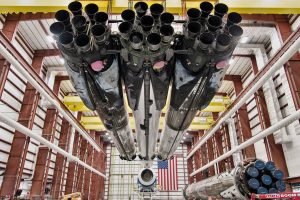- 🚀 SpaceX is tasked with rescuing NASA astronauts stuck on the ISS, using the Crew-9 vehicle in February.
- 😞 Boeing employees feel “humiliated” by NASA’s decision to use SpaceX instead of Boeing’s Starliner capsule.
- 🛰️ NASA’s choice is due to safety concerns, opting to bring the Starliner home uncrewed to gather more data.
- 📉 Boeing’s morale is significantly affected, with employees feeling watched and embarrassed.
- 💬 Elon Musk commented, seeing this as a natural shift where aircraft companies might not lead in space.
In an unprecedented turn of events, SpaceX has been selected by NASA to undertake a critical task: rescuing astronauts stranded aboard the International Space Station (ISS) using the Crew-9 vehicle. This move marks a significant moment in aerospace history and has sparked various reactions throughout the industry, particularly within Boeing, which feels the sting of this decision acutely.
The Who, What, and Why: NASA’s Decision
To understand the full scope of NASA’s decision to favor SpaceX over Boeing, it’s essential to delve into the reasons behind this choice.
Who’s Involved?
The key players in this scenario are NASA, SpaceX, and Boeing. NASA, the United States’ leading space agency, has entrusted SpaceX with this vital mission. On the other hand, Boeing, a long-standing partner of NASA in aerospace ventures, finds itself in a challenging position. This decision highlights a pivotal point in the competitive landscape of space exploration.
What Happened?
Astronauts Butch Wilmore and Suni Williams, scheduled for an extended stay on the ISS, encountered a potential predicament due to logistical constraints. Traditionally, such missions would rely on Boeing’s Starliner capsule for safe return; however, this time, NASA’s decision tilted towards SpaceX’s Crew Dragon vehicle.
Why Did NASA Choose SpaceX?
- Safety First: NASA emphasized safety as its primary concern. The decision to utilize SpaceX’s Crew Dragon over Boeing’s Starliner capsule was driven by a comprehensive safety analysis. NASA’s approach reflects its commitment to minimizing risks associated with space travel.
- Gathering More Data: By opting for an uncrewed return of the Starliner capsule, NASA aims to collect valuable data that could enhance future missions. This decision underscores NASA’s forward-thinking strategy to improve safety protocols and mission success rates.
Implications for Boeing
NASA’s decision has inadvertently placed Boeing in a challenging spotlight. The once-reliable aerospace giant must now confront significant internal and external pressures.
Impact on Morale
Morale within Boeing has hit a low point, with employees reportedly feeling “humiliated” and “embarrassed.” Such sentiments are natural, considering the reputational stakes involved in this competitive industry. Boeing must navigate this period carefully, focusing on regaining its footing and re-establishing confidence within its ranks.
A Historical Shift
Elon Musk’s comment on this decision hints at an intriguing trend, where traditional aircraft companies may face challenges remaining dominant in the evolving space sector. This natural evolution urges all industry players to adapt to new technologies and methodologies, emphasizing innovation and efficiency.
The Crew Dragon: SpaceX’s Star Performer
For those unfamiliar, the Crew Dragon vehicle, SpaceX’s pioneering spacecraft, has redefined the possibilities of modern space travel.
What is the Crew Dragon?
The Crew Dragon is a state-of-the-art spacecraft developed by SpaceX to transport humans to and from space safely. Known for its sleek design and cutting-edge technology, it ensures a heightened level of safety and comfort for astronauts.
Features and Advantages
- Advanced Safety Systems: The Crew Dragon is equipped with the latest safety features, including an in-flight abort system to protect astronauts in the event of an emergency.
- Autonomous Capabilities: The vehicle can operate autonomously, reducing the potential for human error during critical phases of flight.
- Reusable Design: Crew Dragon’s reusability plays a crucial role in making space travel more cost-effective and sustainable.
Conclusion: A Turning Point in Aerospace
NASA’s decision to entrust SpaceX with this crucial mission signifies a turning point in aerospace. It highlights the industry’s shift towards more agile, innovative companies, capable of adapting quickly to new challenges. While Boeing faces a moment of introspection, it also presents an opportunity for the company to innovate and transform to meet the demands of modern space exploration.





